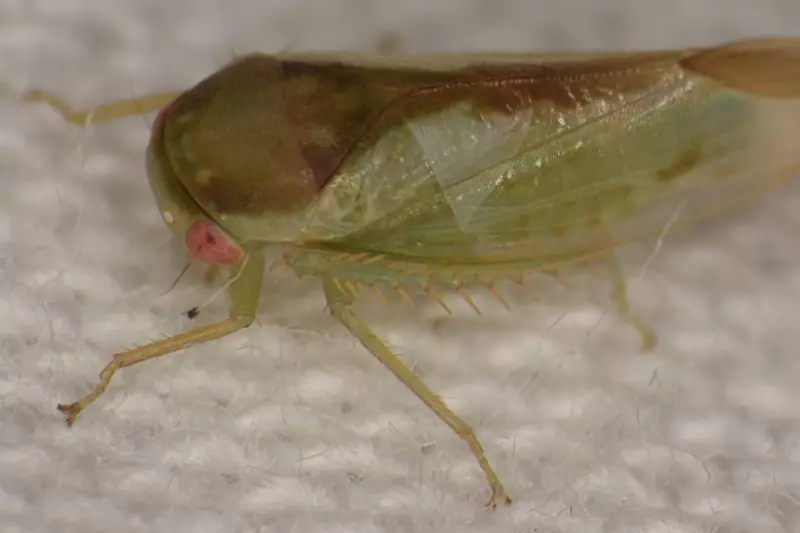
In a significant breakthrough for entomology, seven new species of a frog-like insect have been officially confirmed as new to science. The discovery was made in the rainforests of Uganda by a British researcher.
A Discovery in the Canopy
The previously unknown leafhoppers, belonging to the genus Batracomorphus, were identified during fieldwork conducted by Dr Alvin Helden of Anglia Ruskin University. The finding, confirmed in November 2025, marks the first new Batracomorphus species recorded in Africa since 1981.
These insects are mostly green, possess large eyes, and are noted for their long hind legs, which they tuck alongside their bodies. This distinctive posture, combined with their jumping motion, is reminiscent of a frog, a characteristic reflected in their name which derives from the Greek for “frog-shaped”.
The Key to Identification
Dr Helden faced a major challenge in proving these insects were genuinely new. Leafhoppers of this genus look almost identical to the naked eye. The only reliable method to distinguish one species from another is a detailed examination of their genitalia.
These insects follow a “lock and key” mechanism of reproduction. The male genitalia acts as a uniquely shaped ‘key’ that will only fit the ‘lock’ of the female genitalia from the same species. These complex structures are made from the same tough material as their exoskeleton, ensuring successful mating can only occur within the same species and preventing hybridisation.
The seven new species were all collected using light traps set in the rainforest of Uganda’s Kibale National Park, at altitudes above 1,500 metres. Prior to this discovery, 375 species of Batracomorphus were known worldwide, with just two of those recorded in the UK.
A Personal Tribute and Scientific Value
Dr Helden, who is part of the Ecology, Evolution and Environment Research Centre at Anglia Ruskin University, expressed his passion for the work. “Leafhoppers are beautiful, endearing creatures,” he said. He acknowledged that while some can be agricultural pests, overall they are an undervalued group of herbivores that serve as a vital food source for birds and other insects. “Their presence is a sign of a healthy ecosystem,” he added.
The fieldwork was demanding, involving painstaking effort in intense heat and humidity. “It is incredibly satisfying to find species previously unknown to science – it makes all the hard work worthwhile,” Dr Helden remarked.
He named six of the leafhoppers in Greek, after their distinctive features or locations. The seventh species, however, carries a deeply personal meaning. He named it Batracomorphus ruthae in honour of his late mother, Ruth, who passed away in 2022.
“Ruth was a scientist, who worked in a hospital laboratory,” Dr Helden shared. “She bought me my first microscope, which I still have, and encouraged my love of science from the very beginning, so naming a species after her feels like the most fitting tribute I could give.”
The full details of these exciting discoveries have been published in the scientific journal Zootaxa.





